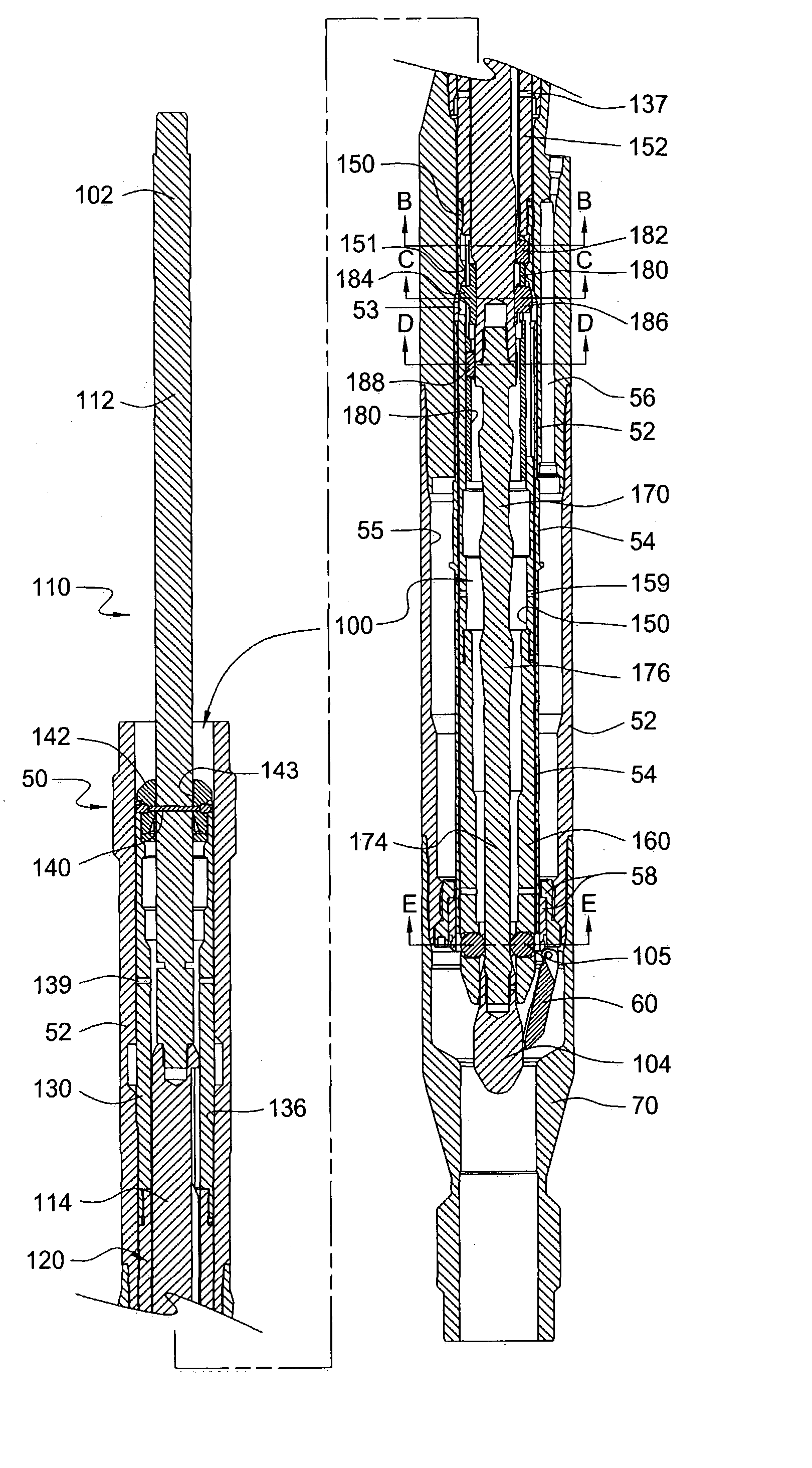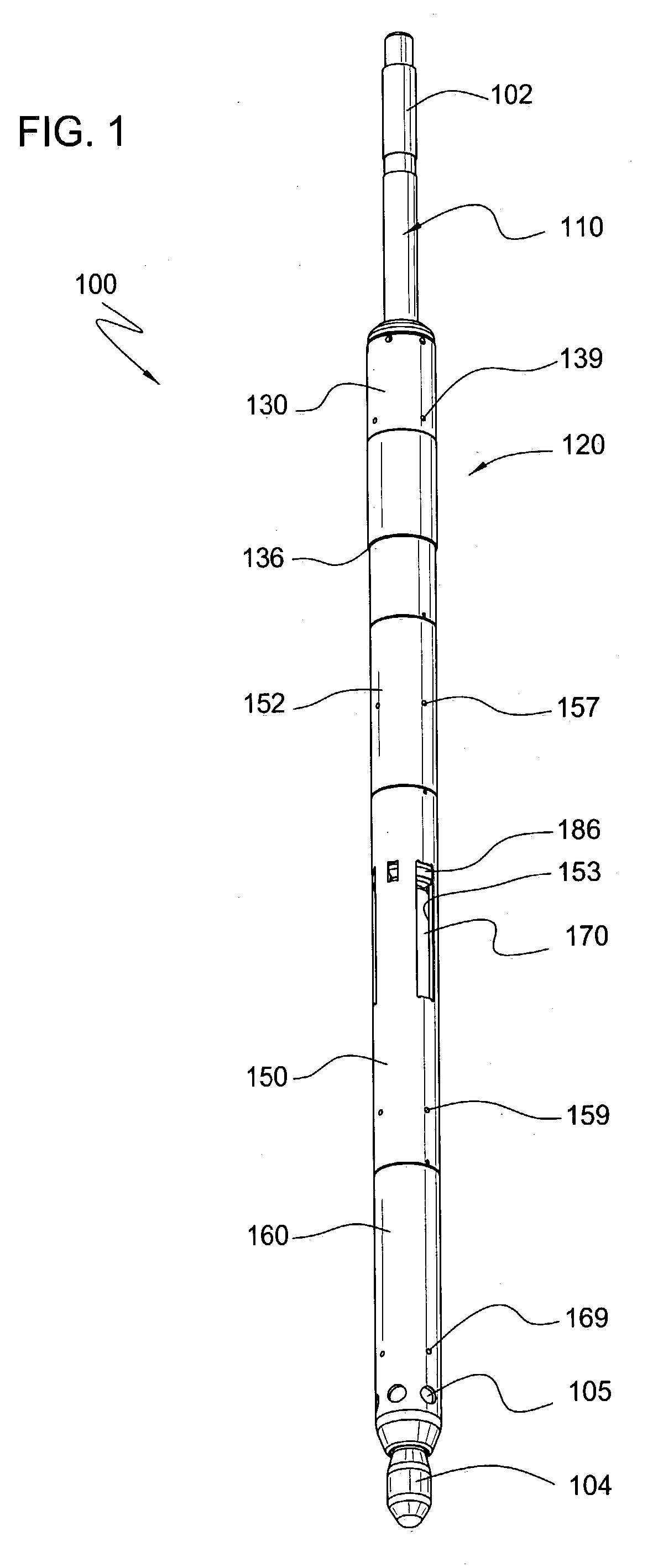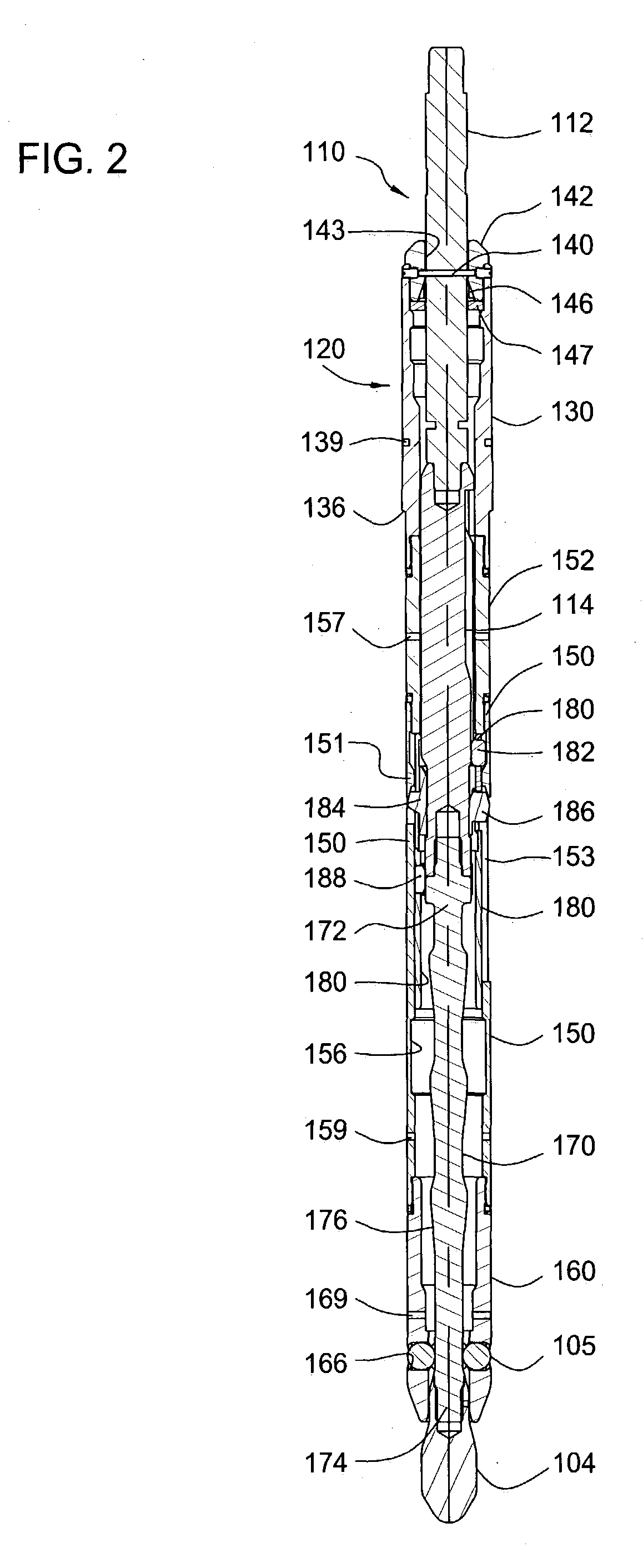Method and apparatus for locking out a subsurface safety valve
a safety valve and subsurface technology, applied in the field of safety valves, can solve the problems of inconvenient installation, inconvenient maintenance, and inconvenient maintenance of tubing retrievable safety valves, and achieve the effects of reducing the number of safety valves, and increasing the cost of installation
- Summary
- Abstract
- Description
- Claims
- Application Information
AI Technical Summary
Problems solved by technology
Method used
Image
Examples
Embodiment Construction
[0077] FIG. 1 presents a perspective view of a lockout tool 100 of the present invention, in one embodiment. In this view, the lockout tool 100 is shown in its run-in position. The lockout tool 100 is designed to be landed within a tool 50 to be expanded within a hydrocarbon wellbore (not shown in FIG. 1). An example of such a tool is a subsurface safety valve 50 (also not shown in FIG. 1).
[0078] The present invention will be described in connection with a tubing retrievable surface controlled subsurface flapper type safety valve. It will be understood, however that the present invention may be used with other types of subsurface safety valves, including those having different type valve closure members such as balls, and those having different type actuation methods, such as subsurface controlled (i.e., velocity, dome charged, and injection) safety valves. In addition, and as will be described in further detail below, the lockout tool may be used to radially expand a selected porti...
PUM
 Login to View More
Login to View More Abstract
Description
Claims
Application Information
 Login to View More
Login to View More - R&D
- Intellectual Property
- Life Sciences
- Materials
- Tech Scout
- Unparalleled Data Quality
- Higher Quality Content
- 60% Fewer Hallucinations
Browse by: Latest US Patents, China's latest patents, Technical Efficacy Thesaurus, Application Domain, Technology Topic, Popular Technical Reports.
© 2025 PatSnap. All rights reserved.Legal|Privacy policy|Modern Slavery Act Transparency Statement|Sitemap|About US| Contact US: help@patsnap.com



